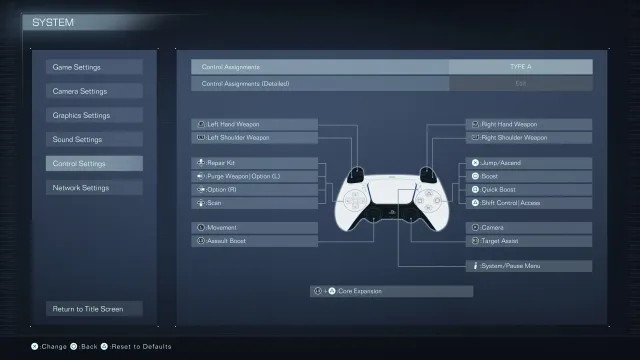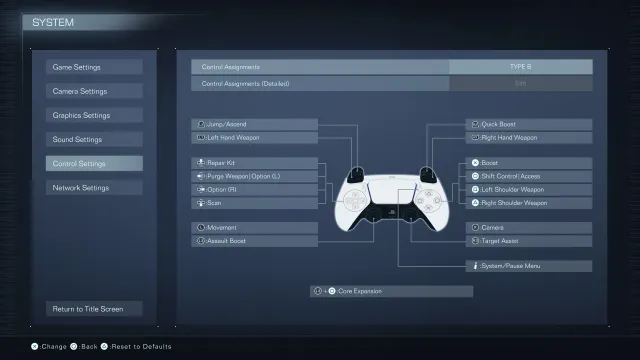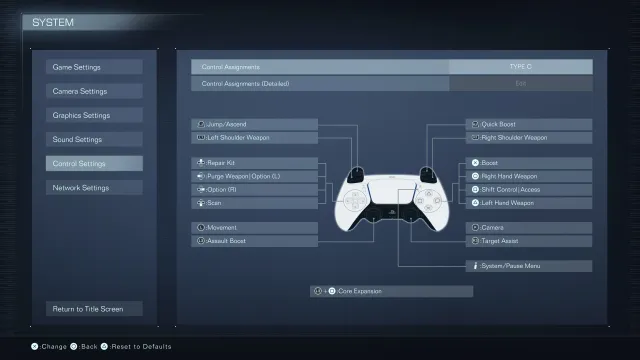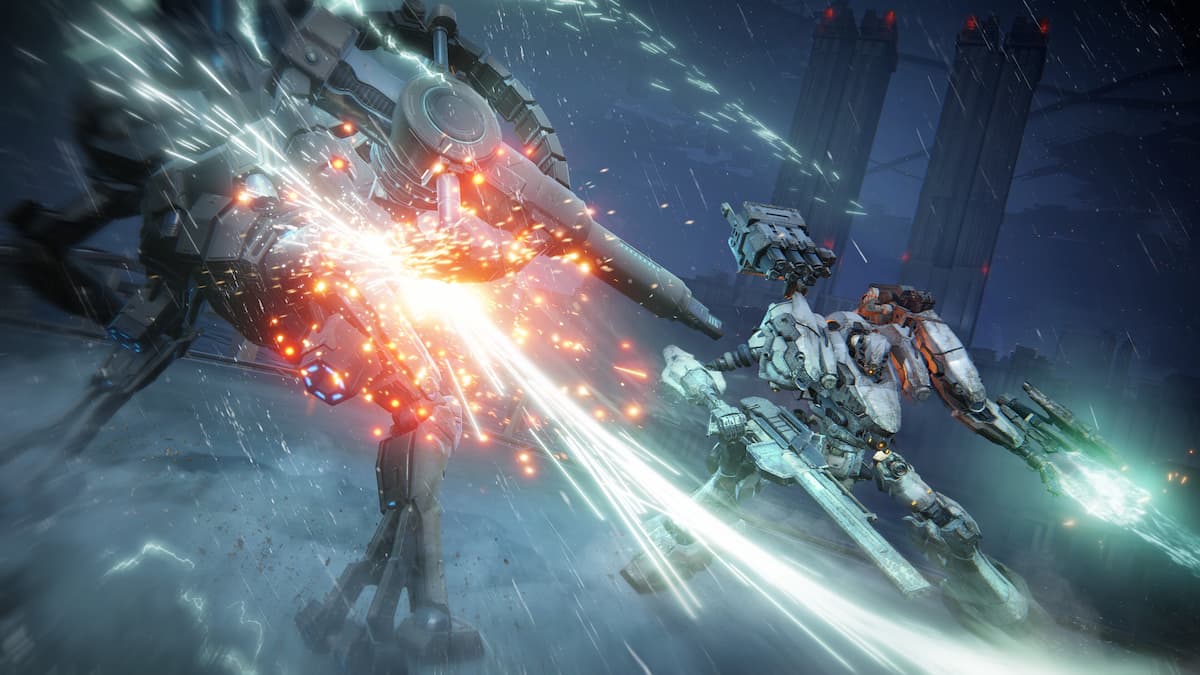The controls you use to pilot your corporate-issued combat mech in Armored Core 6 can seem a bit finicky and complicated at first even to veterans of the series. You’re not on a DualShock 2 anymore.
In the fast paced, frenetic mech combat of AC6, a single mistake can spell your end—but if you’re a fan of FromSoft, you’re probably used to those high stakes already. You’ll need your controller layout to enable you to play at your best.
Luckily, full remapping is available—including, surprisingly, in the console versions of the game—and AC6 even comes packed in with a few preset controller layouts to tweak your experience to your liking if you don’t feel like editing every single button manually. While preferences will, obviously, differ from player to player, each of the three layouts offered to players offers its own appeal depending on your playstyle.
3 best controller button layouts in Armored Core 6
Type A

Type A is the default control configuration, and for all intents and purposes feels like the “intended” way to play the game. It’ll be instantly familiar to Elden Ring players: the jump, guard, attack, interact and dash inputs are all exactly the same, and the only real stumbling block I encountered came from the quickstep not being bound to the same button as the dash anymore. Treat it like playing Elden Ring on fast forward and you should be alright.
Related: How to beat the Smart Cleaner in Armored Core 6
Type B

Type B is far less standard, moving the shoulder weapons to the face buttons and instead mapping your mobility functions (quick boost and jump) to the triggers. This one is more suited to players who favor a lightweight, agile mech (and the twitchy play style it necessitates), as having the dodging options at your fingertips makes it far easier to fire off a quick boost in the midst of combat.
Type C

Type C is weirder still. This one deprioritizes the left and right hand weapons—any AC pilot’s bread and butter—by moving them to face buttons while retaining Type B’s emphasis on mobility. This one might be decent for a long-range aerial fighter that specializes in pouring on damage with shoulder-mounted missile launchers, but a more tactical build may fall flat in the hectic battles of Chapter 1.
Ultimately, it’s up to preference, but any use case for Type C is limited at best. At least starting out, you may want a jack of all trades midweight build to ensure you’re prepared for every situation, in which case Type A is your best bet. As you progress, however, you may find that you prefer being nimble and flexible, and shift over to Type B to facilitate that.
There’s no wrong answer, but just like every aspect of piloting an AC, having the right tool for the right situation is essential. Don’t let your build or your strategy stagnate—on Rubicon, it pays to stay on your toes at all times.





Published: Aug 25, 2023 01:32 pm